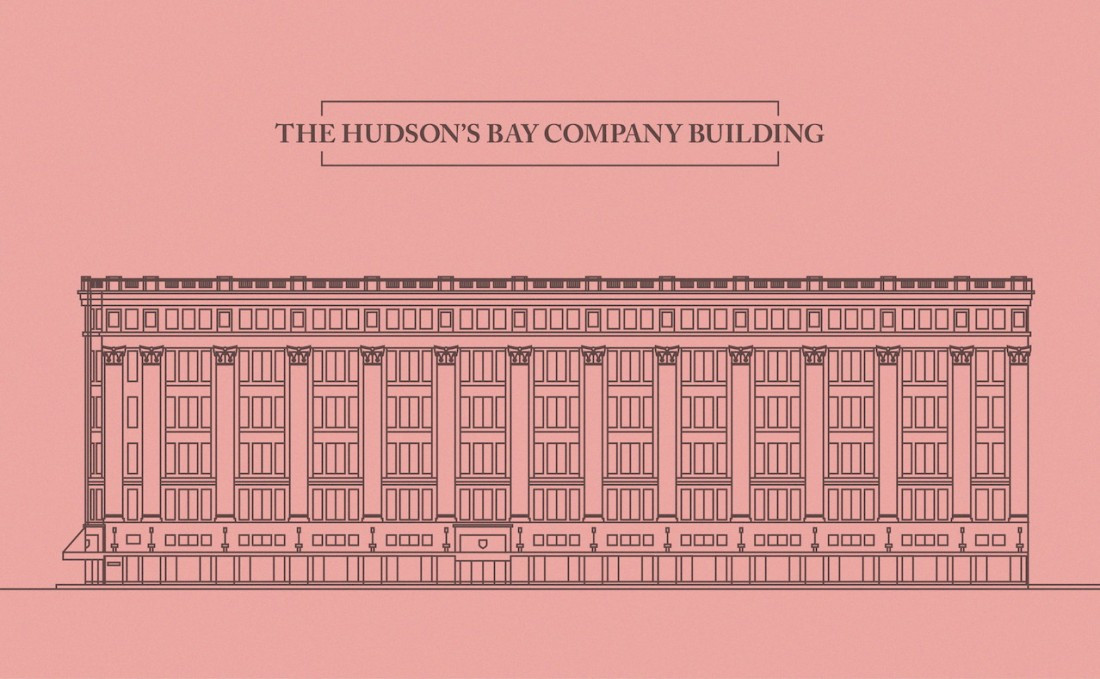Middle of nowhere
Let’s not get attached to The Bay downtown
Each day on my way to work, I pass a monolith of the prairies known as Hudson’s Bay. The department store at Portage and Memorial is a massive structure that harkens back to the early days of Winnipeg’s commercial optimism. Today it sits nearly empty as a barren casualty of suburban sprawl.
To no one’s surprise, The Hudson’s Bay Company recently announced it will be scaling back operations, once again, in their flagship Winnipeg store. While HBC has spun it as a strategic move, “in order to improve navigation and enhance the overall shopping experience,” this is only the latest in a series of cutbacks to an obviously flailing enterprise.
If you ask around, The Bay holds special significance for a lot of Winnipeggers. Some have fond memories of special trips downtown to go Christmas shopping or eat at the Paddlewheel Restaurant. Others revere the building itself as an immovable feature of the city’s landscape. (I’ll admit that I have a vintage postcard depicting 1920s Portage Avenue on my living room wall).
Still others are drawn to the company’s Canadiana with patriotic pride. Hudson’s Bay is an official sponsor of Canada’s Olympic team, and their “point blankets” (the white ones with coloured stripes) are an undoubtedly iconic Canadian design.
Whatever the appeal, there’s a sense of nostalgia surrounding the dwindling store. It seems that we think of The Bay’s store downtown as a tragic and unfortunate casualty of these changing times, our last tether to a simpler and more wholesome Canada.
But while HBC is undoubtedly a part of our heritage, sentimentality surrounding the brand is misplaced at best.
The company was founded in 1670 when King Charles II gave some British nobles exclusive rights to the resources of a land that was already occupied by various indigenous peoples. In many cases, the company was responsible for first contact between settler and indigenous peoples. By exchanging their iconic wool blankets and other items for furs and pelts, HBC was responsible for many indigenous communities shifting from self-sustainability to reliance on European products.
Even if we disregard stories of violence to accept the most Sunday-school-appropriate version of the company’s history, HBC was in the vanguard of a state-sanctioned colonial project, which resulted in centuries of exploitation and cultural genocide. As it exists today, HBC is a U.S. owned corporation that still flaunts this legacy by selling their striped blankets for prices that only the most affluent consumers can afford.
To be sure, Hudson’s Bay helped make Canada what it is today. But rediscovering our heritage isn’t just about reblogging vintage postcards of local architecture and wearing striped toques. It’s also about coming to terms with, and making amends for, the travesties that allowed many Winnipeggers the relative comfort we live in today.
The future of The Bay building at Portage and Memorial is uncertain. In all likelihood, the cost of retrofitting the building for any other use will be higher than the value of the building itself. But however we move forward, let’s resist sentimental ties to exploitation.
After all, what historian Peter C. Newman calls the “oldest continuous capitalist corporation still in existence” shouldn’t give us the warm fuzzies – even if their blankets do.
Tim Runtz is the Comments editor at The Uniter, an associate editor at Geez magazine, and an occasional bicycle mechanic.
Published in Volume 70, Number 17 of The Uniter (January 28, 2016)







